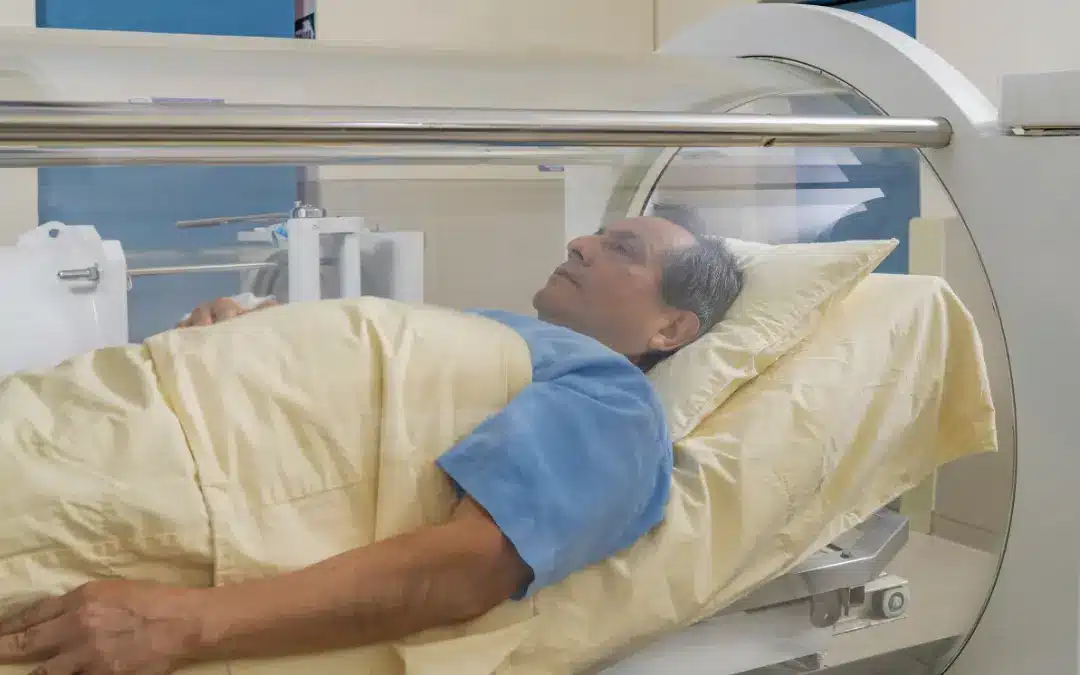Scleroderma, a challenging autoimmune condition, presents a unique set of obstacles for those it affects. The excessive deposition of collagen in the subcutaneous tissue and other areas of the body can lead to reduced blood supply, impaired wound healing, and a cascade of complications. However, a beacon of hope is emerging in the form of hyperbaric oxygen therapy (HBOT). Let’s delve into the potential of HBOT to offer relief and healing to those battling scleroderma.
Scleroderma: Unraveling the Challenge
In scleroderma, collagen accumulates in abnormally high concentrations within the body, particularly in the subcutaneous tissue. This can have a profound impact, leading to restricted blood supply to the skin and compromised wound healing. As a result, wounds may fester and become infected, exacerbating the condition. The diminished oxygen delivery to affected areas further complicates the situation.
The Power of Hyperbaric Oxygen Therapy
Hyperbaric oxygen therapy stands out as a promising approach to address the challenges posed by scleroderma. Here’s how it works:
- Delivering Oxygen to Ischemic Wounds: HBOT is known to deliver oxygen effectively to ischemic (oxygen-deprived) areas, including those affected by scleroderma. This influx of oxygen can kickstart the healing process, potentially accelerating it by up to 50%.
- Immunomodulation: HBOT serves as an immunomodulator, influencing the immune response. It can reduce the production of ICAM (Intercellular Adhesion Molecule) and Tumor Necrosis Factor alpha by vascular endothelial cells and neutrophils. This modulation helps in managing the autoimmune aspects of scleroderma.
Exploring the Research
To understand the impact of HBOT on scleroderma, let’s take a closer look at two patient cases:
Patient 1: A 50-year-old ceramic artist with diffuse scleroderma for a decade presented with over 10 open wounds in her upper extremities, persisting for at least six months and resistant to conventional treatments.
Patient 2: A 46-year-old trumpet player with cutaneous scleroderma for seven years reported symptoms of Raynaud’s phenomenon, winter season ulcers on his fingertips, and numbness in his fingers.
Both patients underwent 50 consecutive 90-minute sessions of HBOT in a mild hyperbaric chamber at 1.3 ATA (atmospheres absolute).
Remarkable Results
While the initial treatments did not yield significant changes, the following outcomes were observed:
- Raynaud’s Improvement: After the 20th session, episodes of Raynaud’s phenomenon began decreasing and eventually ceased.
- Wound Healing: By the 30th session, both patients exhibited clear signs of wound healing.
- Sensation Restoration: Sensation returned to the fingertips of both patients.
- Oxygen Saturation: Pulse oximetry readings consistently reached 98% in all fingers by the 40th session.
- Long-Term Benefits: Even a year after discontinuing HBOT, wounds remained healed, and pulse oximetry readings maintained at 98%. There was also a noticeable regression in the amount of deposited collagen.
Conclusion
While HBOT is not currently an approved treatment for scleroderma, the therapy’s ability to combat ischemia makes it a potential ally in managing the condition. Oxygen diffusion to previously ischemic areas may lead to changes in the number and distribution of capillaries, fostering healing. Additionally, HBOT may ameliorate the chronic autoimmune aspects of scleroderma.
In the world of medical research, HBOT continues to illuminate new paths toward healing and relief for those facing challenging conditions like scleroderma. As we await further studies and clinical trials, the potential for HBOT to provide lasting benefits remains a source of hope for patients and their healthcare providers. The journey towards more effective treatments and improved quality of life is an ongoing one, with HBOT at the forefront of innovation and promise.
Source
Hyperbaric Research & Studies. The Effect of Hyperbaric Oxygen on Scleroderma. Hyperbaric Research & Studies https://hyperbaricstudies.com/the-effect-of-hyperbaric-oxygen-on-scleroderma

